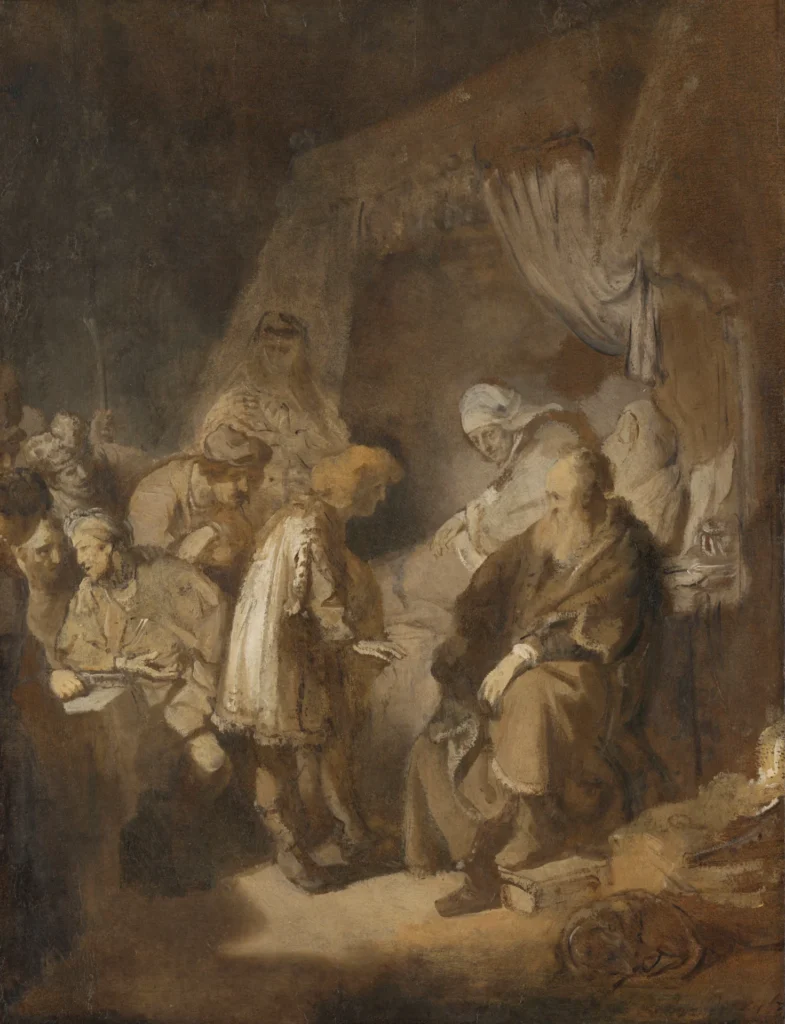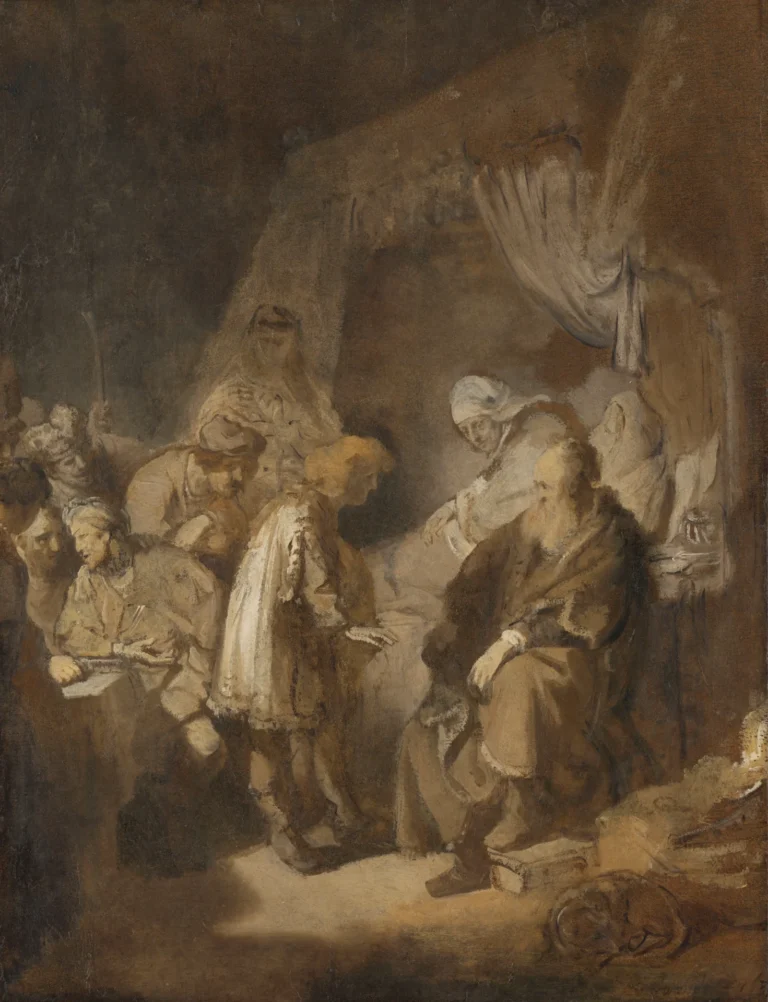Joseph Telling His Dreams (1633)
Joseph Telling His Dreams is an evocative painting by the renowned Dutch artist Rembrandt van Rijn, created in 1633. The piece captures a pivotal moment from Genesis 37:10, where Joseph reveals his prophetic dreams to his father Jacob and mother Rachel, stirring jealousy among his brothers. Rendered in a limited yet impactful color palette of grays and browns, Rembrandt’s mastery of light and shadow enhances the scene’s emotional weight, showcasing the chiaroscuro technique that defines much of his early work. This poignant narrative composition highlights Joseph's complex familial relationships, underscoring the theme of jealousy embodied in this pivotal biblical moment.
Year 1633
About the Artwork
In 1633, Rembrandt painted Joseph Telling His Dreams, drawing inspiration from the biblical story found in Genesis 37. In this narrative moment, young Joseph reveals his dreams to his family, which predict his future prominence and foreshadow the jealousy and betrayal he would later endure from his brothers. While portrayed with dramatic intensity, the painting emphasizes not just the immediate reactions of Joseph's family, but also the intricate emotional landscape of familial expectations and the burden of prophetic insight. Rembrandt's nuanced treatment of light heightens the tension in the composition, urging viewers to contemplate the psychological undertones of the encounter. Historically, this work reflects the broader themes of ambition and rivalry prevalent in 17th-century society, resonating with the viewers' understanding of success and envy.
Did You Know
The moment depicted in this painting showcases the beginning of a series of familial conflicts stemming from Joseph’s prophetic dreams, which ultimately lead to his brothers’ betrayal and sale into slavery, pivotal events in the biblical narrative.
Rembrandt is renowned for his chiaroscuro technique, using contrasts of light and dark to create depth in his compositions. In Joseph Telling His Dreams, this technique invites intense emotional engagement, emphasizing the drama of the moment.
Rembrandt’s artistic choices were often influenced by earlier works, including those of Dutch engraver Lucas van Leyden. This illustrates how artists continually build upon and reinterpret themes, creating a rich dialogue throughout art history.










